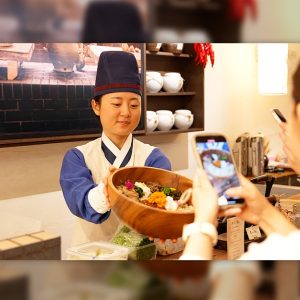CJ Foods’ new plant will expand bibigo’s reach in Japan, driving the growth of K-food in the region
After leaving behind Tokyo’s dense skyline of high-rise buildings, the scenery changes dramatically. Beyond the undersea tunnel is Chiba Prefecture, a region that moves at a more leisurely pace with its lush greenery and refreshing air. Shortly after entering Kisarazu City, a massive building comes into view — CJ Foods’ new Chiba plant, built to capture Japan’s frozen dumpling market, valued at around 1.1 trillion KRW (825 million USD) annually. Newly constructed, it is poised to become the site for the next stage of driving K-food growth in Japan.
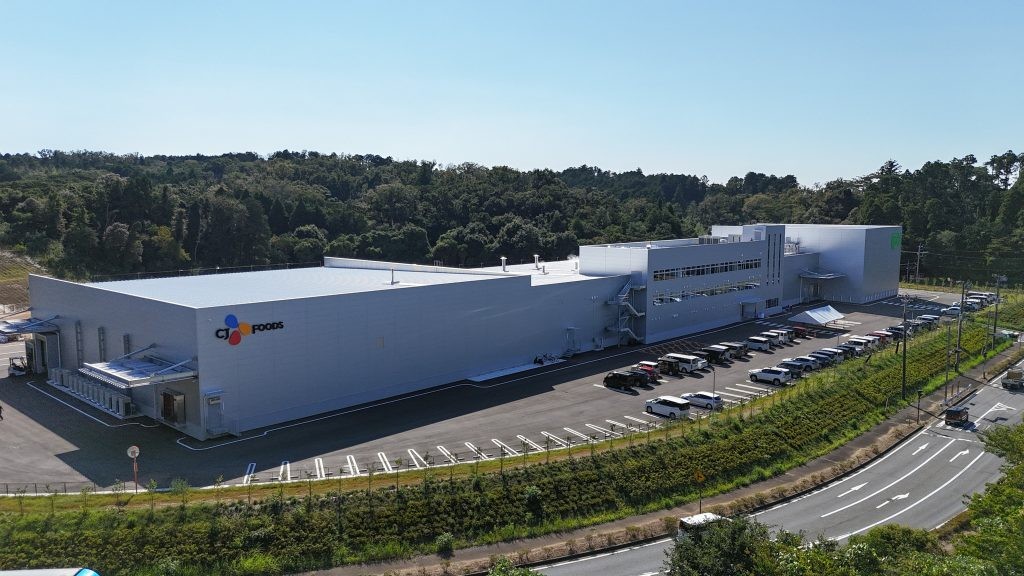
New Beginnings in Chiba
On a site roughly the size of six soccer fields, the new plant spans a total floor area of 8,200 square meters. The Chiba plant marks CJ Foods’ first integrated hub in Japan — a facility capable of handling everything from raw material sourcing to product manufacturing in one location. It is also the first production site ever established in Japan by a Korean food company, marking a historic achievement. The energy of the site feels all the more dynamic as freshly made mandu roll off the line, soon to make their way beyond Chiba and across Japan.
The newly opened plant is filled with the scent of “newness” emanating from its floors, walls and even the air in the hallways. On the day before the official opening ceremony, the steady movements of people to and fro lend an extra sense of liveliness to the scene. Along the corridor, a neatly arranged display features products currently sold in Japan: bibigo and CJ Micho, a fermented fruit vinegar-based drink. Before long, this lineup will expand to include tailored products made locally at the Chiba plant.
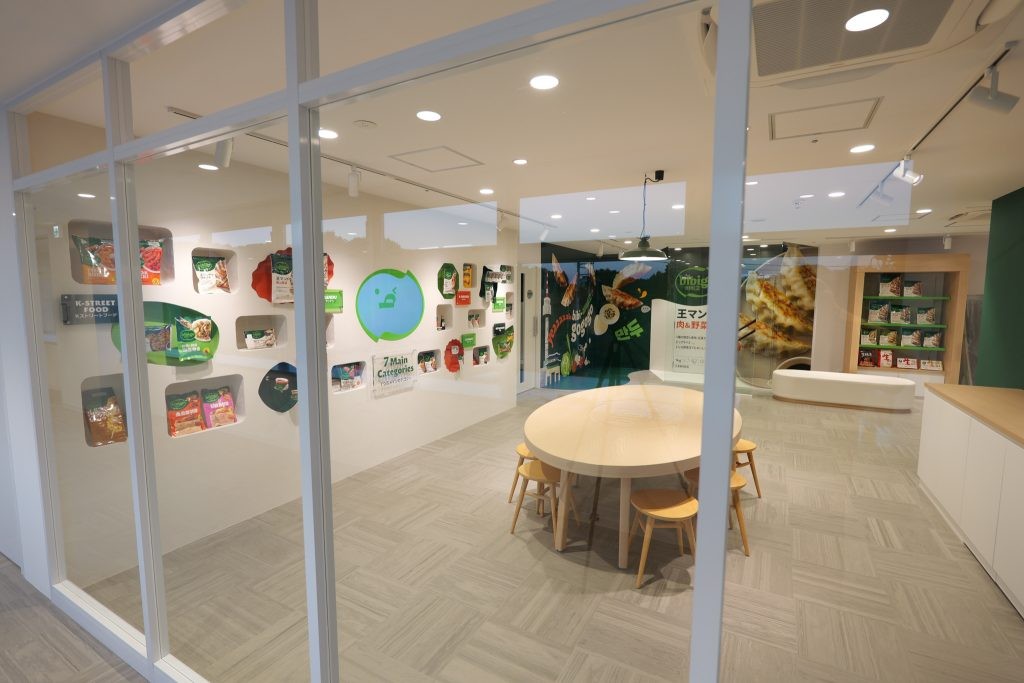
Currently, the Chiba plant’s main product is bibigo Mandu Pork & Vegetable, but the company plans to expand the mandu lineup and eventually also produce MUL MANDU, currently manufactured in Korea, as well as ORIGINAL RECIPE NAMA GYOZA products from CJ Foods’ local subsidiary, Gyoza Keikaku. The company sells both “mandu” and “gyoza,” highlighting the tasting points of the Korean and Japanese dumpling styles, respectively.The empty spaces on the display wall seem to hint at an ambition to quickly broaden the product range and embed bibigo more deeply into the Japanese market.
Catering to Local Tastes
After putting on protective clothing and stepping through an air shower in which strong gusts blow from every direction, a scene of gleaming stainless-steel machines and production lines unfolds. Though only one line is currently operational at this early phase of production, the employees inspecting product quality watch with sharp, focused eyes.
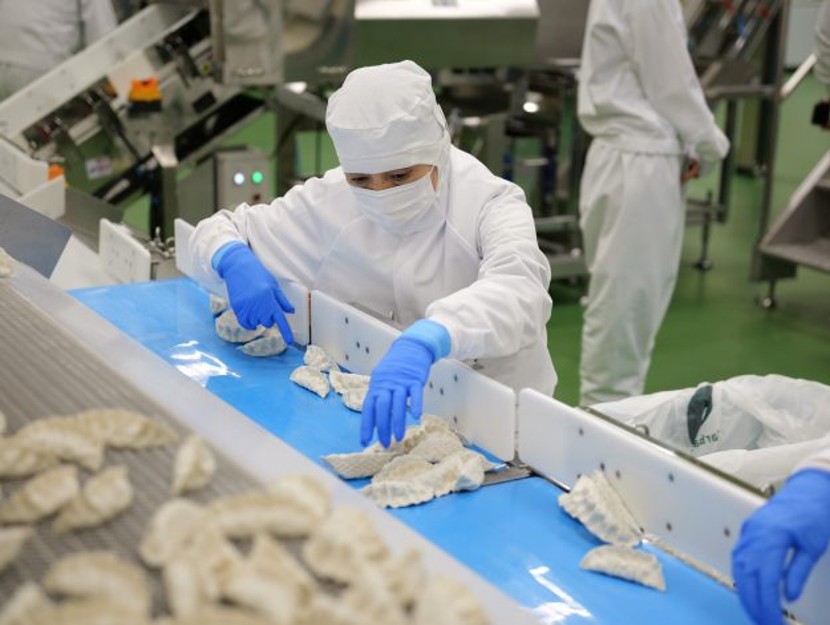
Once the raw ingredients arrive, the dough-making process begins, producing thin yet resilient mandu wrappers that are then filled with a blend of sixteen kinds of vegetables and meats before passing through the forming machine. As small mandu emerge from the forming machine at precise intervals, careful hands move continuously, checking the condition of each dumpling. The new Chiba plant’s distinction lies in the comprehensiveness of this end-to-end production process.
“In the past, our involvement was limited to OEM production or inspecting products manufactured in Korea,” explained Myung Min-kang, Head of Manufacturing. “Now, we can directly oversee every step on-site, from selecting and washing raw materials to pre-processing. This level of precise, hands-on control is what truly sets us apart.”
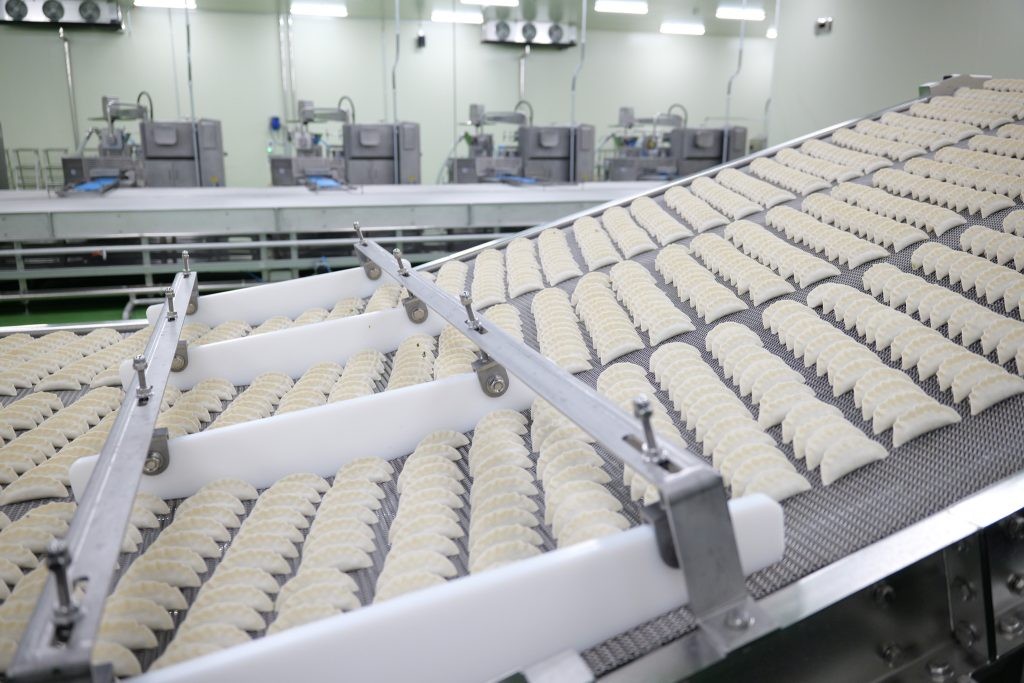
It is essential to customize products for each regional market. In Japan, a typical way to cook dumplings is through the mushiyaki technique — steaming the dumplings while lightly frying the bottoms in a covered pan. The key is to achieve a crispy exterior while keeping the inside moist and juicy. “That’s why we adjust the filling to retain plenty of rich juices,” explained researcher Yang Kang-min, who mixes the dumpling filling in one corner of the factory. “Local consumers will also feel greater trust knowing that bibigo products are made right here in Japan.”
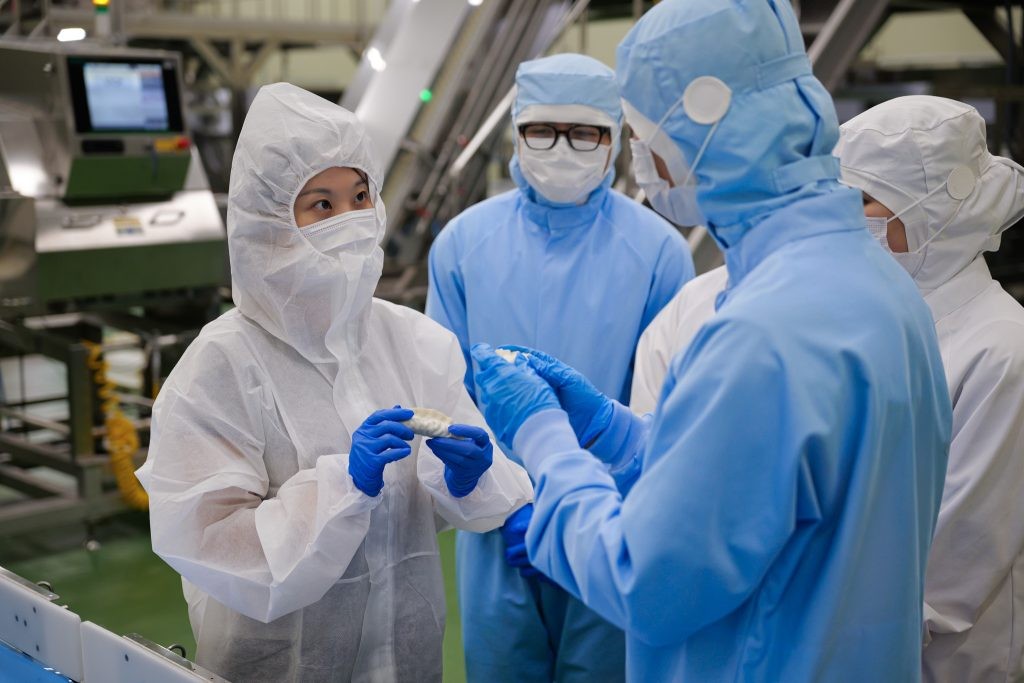
Igniting the Spark of Distribution
The mandu produced at the Chiba plant will be distributed all across the country. In fact, bibigo Mandu has already secured a strong presence in major retail channels such as AEON, Costco, Amazon, Don Quijote and Ito-Yokado, and can now be easily found on convenience store shelves as well. “At first, customers picked them up out of curiosity, but these days, some come specifically to buy two or three bags at a time,” one store employee shared.
This momentum is expected to grow even stronger. Recently, CJ Foods signed a business partnership with ITOCHU Corporation, one of Japan’s largest general trading companies that owns the FamilyMart convenience store chain. By joining hands with the corporation, bibigo’s distribution network is poised to expand even further across Japan.
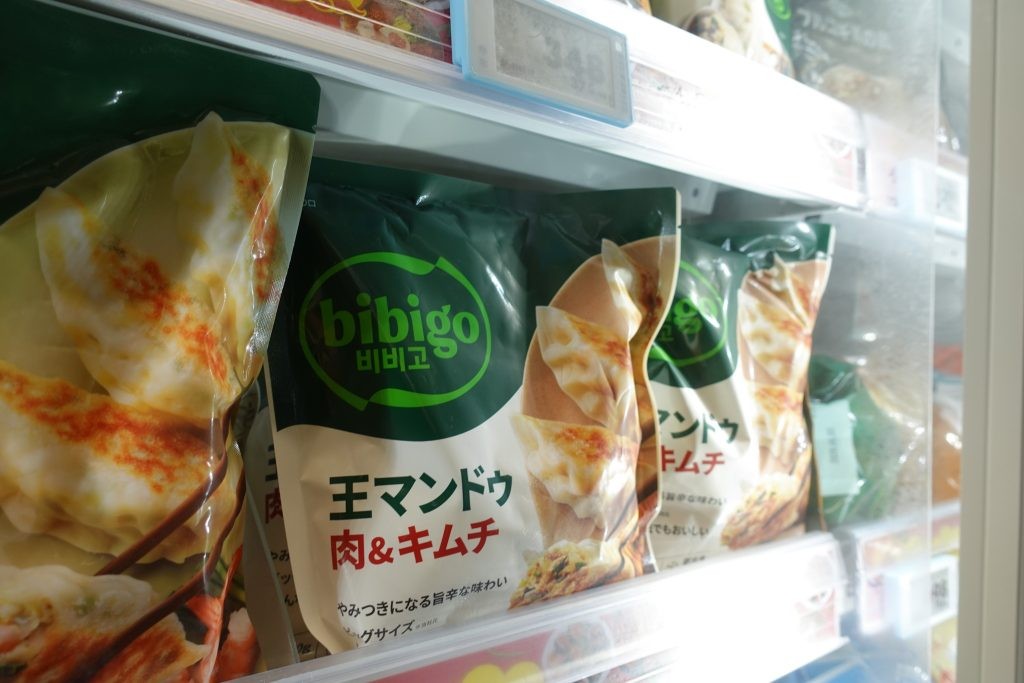
bibigo Mandu is far more than just “frozen food.” It takes about three and a half hours to create a single bag of mandu from start to finish, and only after countless steps of preparation and inspection — and the pride of the local staff — can the product finally reach consumers. The Chiba plant has only just taken its first steps, but it is set to create a meaningful impact on the industry. In the heart of Japan’s fiercely competitive dumpling market, it will serve as a new cornerstone, turning the potential of K-food into reality.











